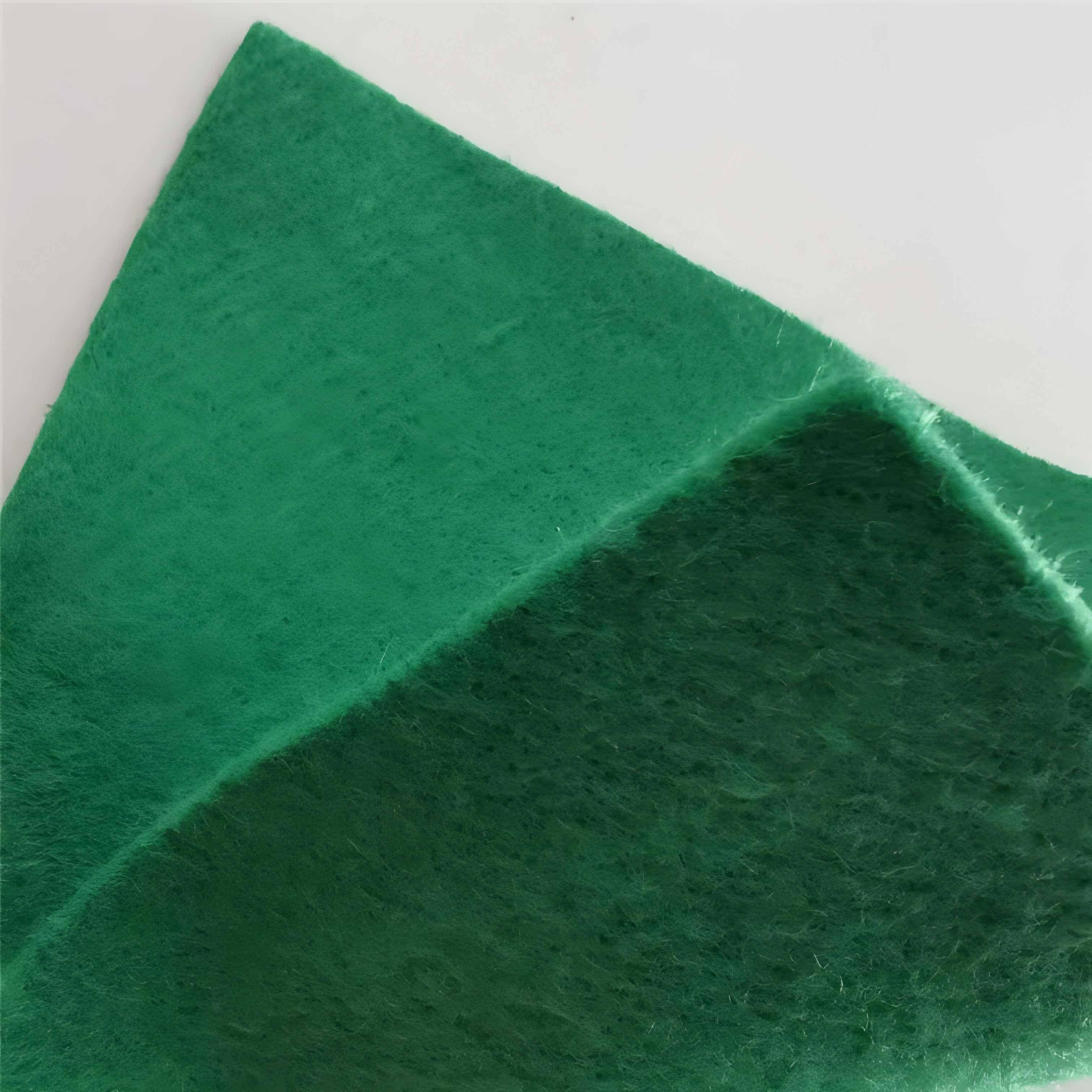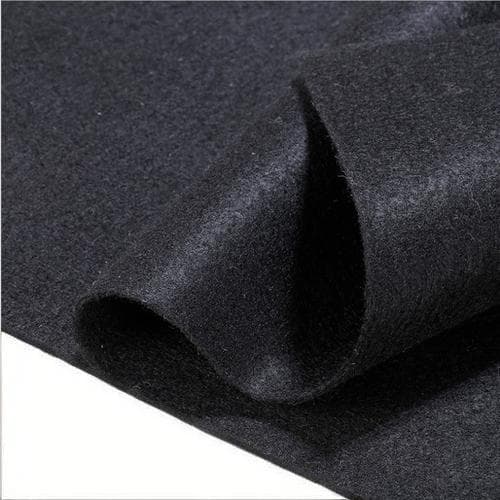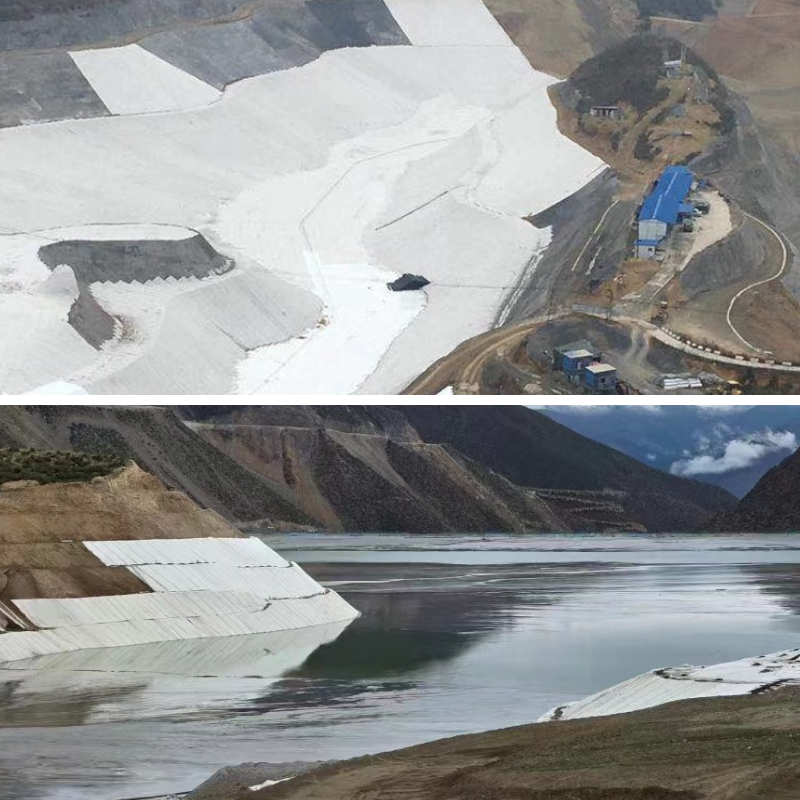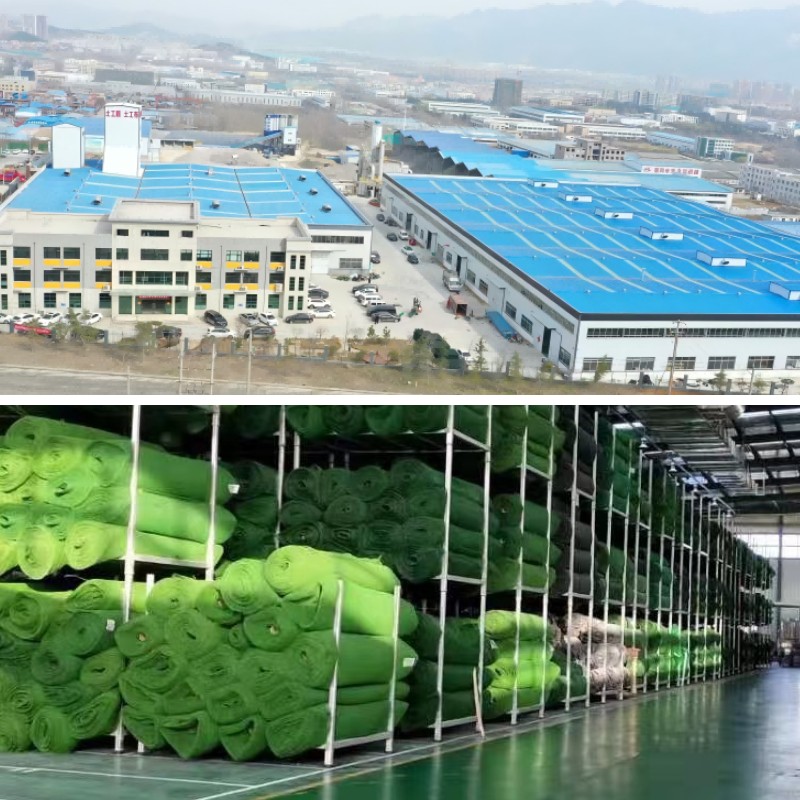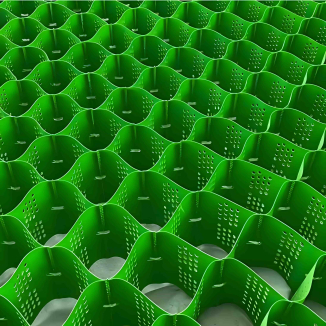Duraforce Geotextile
1.High Strength and Wear Resistance: Utilizing high-quality materials and a directional weaving process, it offers high tensile strength and strong resistance to external forces, making it suitable for complex engineering environments and providing stable long-term performance.
2.Corrosion and Media Resistance: The material itself and its surface protective layer resist corrosion from water, acids, alkalis, and other media, and are not easily damaged by various soil and water conditions.
3.UV and Outdoor Resistance: The addition of UV absorbers blocks the damaging effects of UV rays on the material, extending its outdoor service life.
4.Excellent Drainage and Water Permeability: The special weave creates diversion channels with high porosity, quickly draining accumulated water and retaining sediment, reducing the risk of roadbed erosion.
Product Introduction
I. Basic Attributes
Duraforce Geotextile's core attributes focus on two key dimensions: material and specifications:
Core Material: Made from industrial-grade non-woven polypropylene or polyester fibers, it contains no chemical additives and is an environmentally friendly building material. It is free of hazardous substances and is environmentally friendly.
Specifications: Multiple grades are available (such as AS240, AS280, and AS410), each with varying thicknesses to suit specific application requirements. Standard sizes include 4m×5m and 4m×10m packaging, as well as large rolls of 1.9m×50m and 3.9m×50m. It offers flexible cutting and is highly resistant to thread breakage.
II. Core Functions
Based on the engineering focus of geosynthetics, their core functions can be summarized into four categories:
Reinforcement: High-strength fiber structures enhance soil tensile strength, reducing foundation settlement and road surface deformation. Suitable for structural reinforcement in roadbeds, retaining walls, and soft soil foundations.
Filtration and Reverse Filtration: Utilizing a precise pore structure, it allows water to penetrate while trapping soil particles, preventing drainage blockage caused by the mixing of different media, thus ensuring the stable operation of water conservancy projects and drainage systems.
Drainage and Water Diversion: Internally, it forms three-dimensional diversion channels to quickly drain water accumulated within the soil or base layer, reducing the erosion of hydrodynamic pressure on engineering structures. It is suitable for French drains, slope drainage, and tunnel anti-seepage requirements.
Isolation and Protection: It physically separates soil from different materials, such as sand, gravel, and concrete, preventing interlayer mixing while protecting against water erosion and external impacts, thus safeguarding the stability of engineering foundations and slopes.
III. Main Features
Compared to ordinary geotextiles, its outstanding advantages lie in its performance stability and adaptability to various scenarios:
High Durability: Its high breaking strength and creep resistance allow it to withstand long-term loads and external impacts. It also possesses excellent corrosion resistance, resisting erosion by acids, alkalis, and water, maintaining stable performance in complex soil environments.
Aging Resistance: Through specialized process optimization, it offers excellent UV resistance, reducing degradation caused by outdoor exposure. Its service life in underground applications can reach over 50 years.
High Adaptability: Its flexible texture allows it to conform to uneven substrate surfaces, facilitating easy installation. Certified to NZTA and AASHTO standards, it is suitable for a wide range of projects, including highway, rail, water conservancy, and landscaping.
Efficient Drainage: Its high porosity and low flow resistance allow some specifications to achieve a water flow rate of up to 140 gpm, significantly exceeding conventional drainage efficiency.
Product Parameters
project | metric | ||||||||||
Nominal strength/(kN/m) | |||||||||||
6 | 9 | 12 | 18 | 24 | 30 | 36 | 48 | 54 | |||
1 | Longitudinal and transverse tensile strength / (kN/m) ≥ | 6 | 9 | 12 | 18 | 24 | 30 | 36 | 48 | 54 | |
2 | Maximum elongation at maximum load in longitudinal and transverse directions/% | 30~80 | |||||||||
3 | CBR top penetration strength /kN ≥ | 0.9 | 1.6 | 1.9 | 2.9 | 3.9 | 5.3 | 6.4 | 7.9 | 8.5 | |
4 | Longitudinal and transverse tearing strength /kN | 0.15 | 0.22 | 0.29 | 0.43 | 0.57 | 0.71 | 0.83 | 1.1 | 1.25 | |
5 | Equivalent aperture O.90(O95)/mm | 0.05~0.30 | |||||||||
6 | Vertical permeability coefficient/(cm/s) | K× (10-¹~10-), where K=1.0~9.9 | |||||||||
7 | Width deviation rate /% ≥ | -0.5 | |||||||||
8 | Unit area mass deviation rate /% ≥ | -5 | |||||||||
9 | Thickness deviation rate /% ≥ | -10 | |||||||||
10 | Thickness coefficient of variation (CV)/% ≤ | 10 | |||||||||
11 | Dynamic perforation | Puncture hole diameter/mm ≤ | 37 | 33 | 27 | 20 | 17 | 14 | 11 | 9 | 7 |
12 | Longitudinal and transverse fracture strength (grab method)/kN ≥ | 0.3 | 0.5 | 0.7 | 1.1 | 1.4 | 1.9 | 2.4 | 3 | 3.5 | |
13 | Ultraviolet resistance (Xenon arc lamp method) | Longitudinal and transverse strength retention rate% ≥ | 70 | ||||||||
14 | Ultraviolet resistance (fluorescence UV lamp method) | Longitudinal and transverse strength retention rate% ≥ | 80 | ||||||||
Product Application
1. In the construction of transportation infrastructure, it serves as a key material for enhancing the stability of subgrades and tracks. In road engineering, when laid between subgrade soil and the cushion layer, it can not only disperse the load generated by vehicle movement to reduce subgrade settlement and cracking, but also isolate the mixing of cushion gravel and soft soil, preventing gravel from sinking into the soft soil. This makes it particularly suitable for road construction in soft soil areas. During railway track construction, when placed between the ballast bed and the subgrade, it can prevent soil particles from entering the ballast bed and causing compaction, while allowing rainwater to infiltrate and drain, thus avoiding subgrade softening due to water accumulation and ensuring the smoothness and safety of the track. In the construction of airport runways and aprons, when laid between the base course and the foundation, it can enhance the load-bearing capacity of the foundation, resist the high-frequency impact load caused by aircraft takeoffs and landings, reduce cracks in the base course, and extend the service life of the runway.
2. Water conservancy and marine transportation projects are long-term affected by water and corrosive media, and the weather resistance and chemical resistance of durable geotextiles give them significant advantages in such scenarios. For the reinforcement of dikes and flood control embankments, they can be used in conjunction with geomembranes. When laid under geomembranes, they protect the geomembranes from being punctured by sharp soil particles, while enhancing the anti-sliding stability of the dikes. They can also be laid in the drainage layer inside the dike body to accelerate the drainage of seepage water, reduce the pore water pressure, and prevent landslides. In the regulation of rivers and canals, when laid on the slope of a river channel, they can prevent soil erosion caused by water scouring without affecting the seepage and exchange between water and soil, thus protecting the river ecosystem. When used at the bottom of canals, they can isolate the soil from the water-conveying layer, reduce seepage, and improve the water-conveying efficiency of agricultural irrigation canals. In port and wharf projects, they are used in the foundation of yard areas and the cushion layer of breakwaters, which can isolate fillers of different particle sizes such as sand and gravel from silt, avoid uneven settlement of the foundation, and at the same time accelerate the drainage of rainwater or seawater to prevent foundation softening.
3. In building and municipal engineering, durable geotextiles mainly play a role in isolation and stabilization, solving pain points in foundation treatment and underground engineering. In building foundation treatment, for soft soil foundations, after laying durable geotextiles, sand-gravel cushion layers are backfilled. This can prevent soft soil particles from entering the cushion layer, enhance the load-bearing capacity of the cushion layer, and reduce the settlement of the main structure of buildings such as residential quarters and large factories. In the drainage of underground garages and basement roofs, when laid above the waterproof layer and used in conjunction with drainage convex sheets, they can form an efficient drainage channel to quickly drain rainwater or seepage water, avoiding damage to the waterproof layer caused by long-term water pressure. In municipal pipeline engineering, when backfilling the trenches of sewage pipes and water supply pipes, laying them around the pipes can isolate the backfill soil from the pipes, prevent sharp soil particles from scratching the outer wall of the pipes, and reduce the compressive deformation of the pipes caused by soil settlement. In the construction of urban greenways and park trails, when laid between the base course and the soil, they can prevent soil heaving, maintain the flatness of the trails, and at the same time allow rainwater to infiltrate, taking into account both engineering practicality and ecology.
4. In the field of environmental and ecological engineering, their environmental protection and durability make them an important support for ecological protection. In the anti-seepage system of garbage landfills, as a protective layer of the composite anti-seepage layer, they are laid on both the upper and lower sides of the HDPE geomembrane. The upper layer can prevent sharp debris in the garbage from puncturing the geomembrane, while the lower layer can isolate the foundation soil from the geomembrane. At the same time, they assist in drainage, avoiding damage to the anti-seepage layer caused by the accumulation of leachate, and their corrosion resistance enables them to withstand long-term erosion by leachate. During the ecological restoration of mines, in the slope greening stage, laying them can fix the surface soil, prevent soil erosion caused by rainwater scouring, provide an attachment base for plant roots, and accelerate slope greening. In the anti-seepage of tailings ponds, laying them at the bottom or on the slope can isolate tailings from the surrounding soil and water bodies, prevent the infiltration and diffusion of heavy metal pollutants, and protect the ecological environment. In the construction of artificial wetlands, when laid between the wetland substrate (such as sand, gravel, and soil) and the underlying soil, they can isolate different substrate layers, maintain the stability of the wetland hydrological structure, and at the same time not affect the normal seepage and exchange of water bodies, ensuring the ecological function of the wetland.
To sum up, through its four core functions of "stabilization, isolation, drainage, and protection", durable geotextiles effectively solve the pain points of traditional construction in different engineering fields. It not only improves the durability and safety of engineering structures and reduces long-term maintenance costs, but also balances functional needs and environmental protection requirements in ecological protection scenarios. It has become an indispensable key material in modern engineering construction, and its application value will be further expanded in more emerging fields (such as sponge cities and underground utility corridors) with the upgrading of engineering technology.


